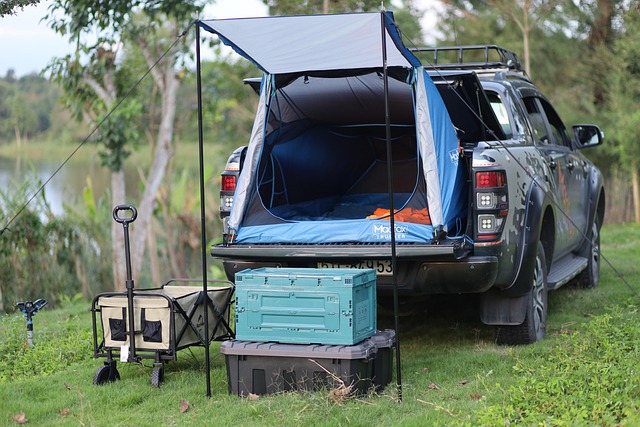Looking to register your car in California? This comprehensive guide walks you through every step, from understanding eligibility requirements for car registration to completing the DMV VIN verification process. We’ll help you gather the necessary documents, schedule a visit to your local California DMV office, and navigate the application process seamlessly. By following these steps, you’ll be on your way to securing your vehicle’s registration and legal operation in no time.
- Understand Eligibility Requirements for Car Registration
- Gather Necessary Documents for DMV Vin Verification
- Schedule and Visit Your Local California DMV Office
- Complete the Vehicle Registration Application Process
- Pay Registration Fees and Receive Your Plate
Understand Eligibility Requirements for Car Registration

Before registering your car in California, it’s crucial to understand the eligibility requirements set by the Department of Motor Vehicles (DMV). One critical step is ensuring that your vehicle meets all safety and environmental standards. This includes passing a smog test, which verifies the vehicle’s emissions control system. The DMV also requires a Vehicle Identification Number (VIN) verification to confirm the car’s authenticity and history.
Additionally, you’ll need to have a valid driver’s license and proof of insurance. For out-of-state vehicles, you might require a title transfer and additional documentation. If your car is new or imported, specific procedures and documents may apply. Always check with the DMV for up-to-date information. You can even utilize mobile VIN verification services to streamline the inspection process before officially registering your vehicle.
Gather Necessary Documents for DMV Vin Verification

Before heading to the California DMV for registration, ensure you gather all the essential documents required for a successful dmv vin verification. This process is crucial to establish the vehicle’s history and authenticity. For a seamless experience, prepare the following: your vehicle’s title, current registration (if applicable), proof of insurance, and identification documents such as a driver’s license or state-issued ID card.
Additionally, consider having your mobile vin inspection or vin inspection done prior to visiting the DMV. This step can save time by ensuring that your vehicle meets all requirements and providing you with a detailed report of its condition. Remember to bring along the completed inspection report when you go for registration, as it will aid in expediting the verification process.
Schedule and Visit Your Local California DMV Office

Before you begin the registration process, it’s crucial to schedule and visit your local California DMV office. This face-to-face interaction is essential for several steps, including the necessary dmv vin verification. Bring all required documents, such as proof of identification, ownership, and insurance. The process typically involves filling out forms, paying fees, and passing inspections, which can be efficiently navigated with prior scheduling.
Choosing to conduct a mobile vin verification or utilise a mobile vin inspector can save time and offer added convenience. These services allow you to complete the necessary checks from the comfort of your own home or on-the-go. However, for many, visiting the DMV in person remains the preferred and more straightforward approach when registering a car in California.
Complete the Vehicle Registration Application Process

To complete the vehicle registration application process in California, you’ll need to gather essential documents and undergo a DMV VIN verification. Start by obtaining an Application for Title and Registration (form DMV-123) from the California Department of Motor Vehicles (DMV) website or any local DMV office. Fill out the form accurately, providing details about your vehicle, including its make, model, year, and unique Vehicle Identification Number (VIN).
Once you’ve completed the form, it’s time for the crucial step of VIN verification. You can do this through a mobile vin verifier or conduct a mobile vin inspection to ensure that the information on your registration application matches the vehicle’s actual specifications. After verifying the VIN, submit your application along with the required fees and necessary documents, such as proof of insurance and identification, to your local DMV office. This will initiate the process of registering your vehicle in California.
Pay Registration Fees and Receive Your Plate

After completing your vehicle’s registration application at the DMV, the next step is to pay the necessary fees. These include the registration fee, which varies based on your vehicle type and model year, plus a $27.50 fee for VIN verification or inspection. You can choose to conduct this process at a DMV office by scheduling a vin inspection or opt for a more convenient mobile vin verification service. The latter allows a qualified inspector to visit you at your preferred location, ensuring a smoother and time-saving experience.
Once the fees are paid, you’ll receive your vehicle’s license plate. This marks the official registration of your car in California. Keep your registration papers handy for future reference and ensure you follow all state regulations regarding license plate display and maintenance.
Registering a car in California is a straightforward process, ensuring your vehicle is safe for road use. By understanding the eligibility requirements, gathering the necessary documents for a successful DMV VIN verification, and completing the registration application at your local California DMV office, you’ll have your vehicle’s paperwork taken care of promptly. Remember to pay the required fees and pick up your new license plate to legally hit the open road.



